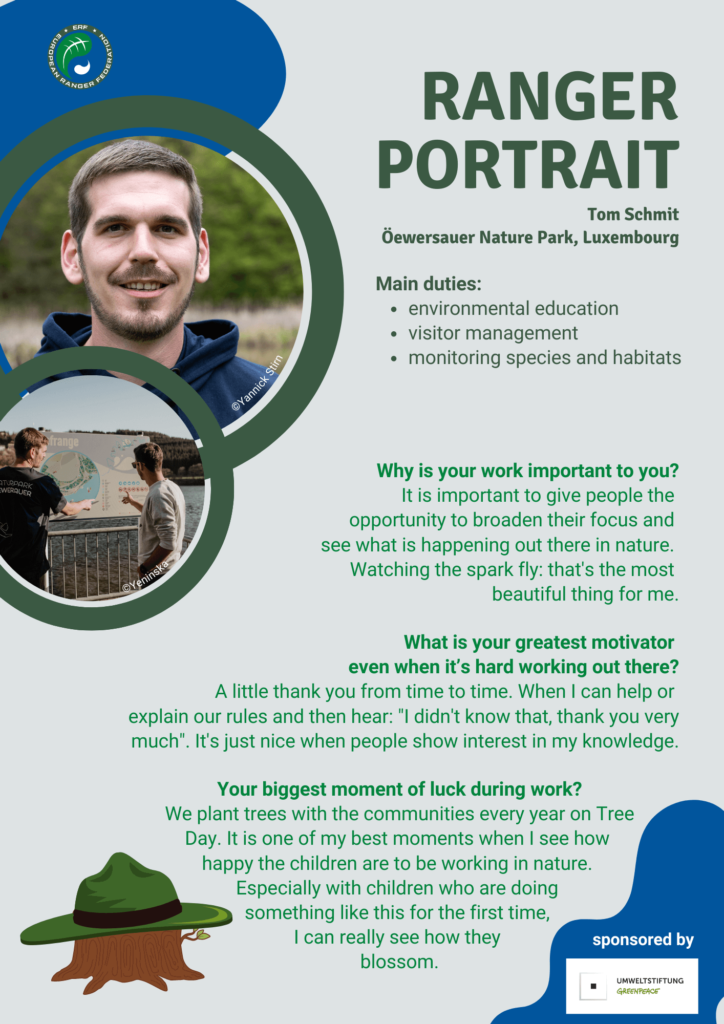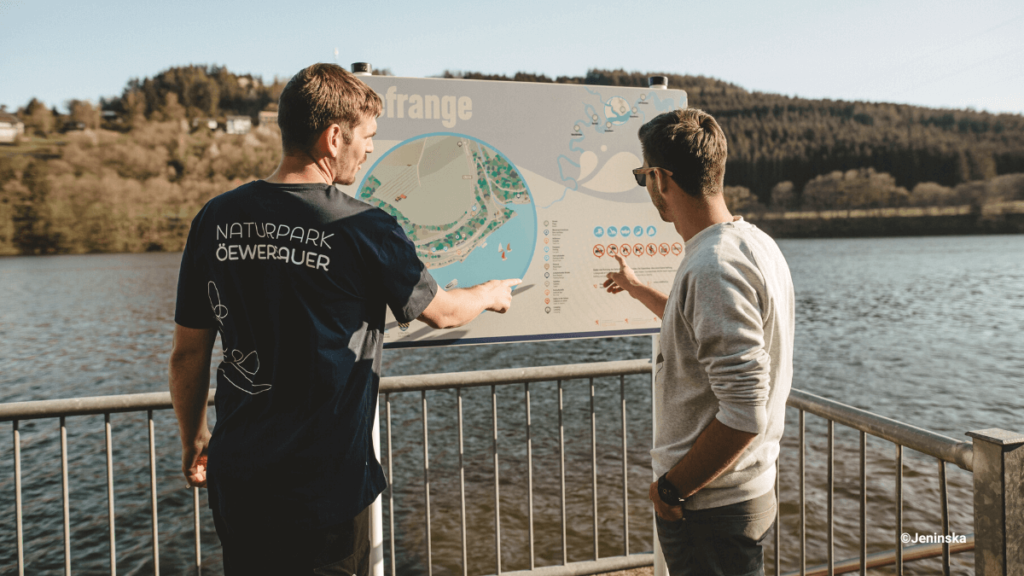One of Europe’s smallest countries has had a ranger for just under two years: Tom Schmit works for the Öewersauer Nature Park, one of three nature parks in the 2,590 square kilometre country. What is it like to work as Luxembourg’s only ranger so far?
He tells us in this interview, and also how he became one and why he thinks it’s important that the nature park is networking and, among other things, has recently become a member of the European Ranger Federation.
Tom, how did you come to be hired as Luxembourg’s first ranger?
The heart of the Öewersauer Nature Park is a drinking water reserve with a lake created by a dam. Apart from supplying drinking water, its functions are tourism, power generation and protection against flooding. Bathing is allowed in the lake, but depending on the distance from the drinking water intake, there are different protection zones and rules for visitors. My role as a ranger is mainly to educate and monitor compliance with the rules. After graduating from high school, I did some further training on wood utilisation and silviculture. I am a fisherman and hunter, and I worked for a year in Canada as a landscape gardener. All these experiences were taken into account when I was hired. With my experience, I think I was a good match for the requirements among very many applicants. In addition, I come from here and know nature well.

What does your everyday life as a ranger look like in practice?
In summer, I spend three to four months almost exclusively on the hiking trails and lawns to educate and help visitors. I also do guided tours on the development of the region, for example on the subject of coppice forests, which are typical here. For a long time, oaks were used here to extract tannin from their bark as tanning agent. This cultivation on the slopes no longer exists due to simpler methods. To ensure that drinking water is not endangered by the use of petrol-driven machines, sustainable methods in forestry and agriculture are also promoted. My work with school classes is also about raising awareness of drinking water protection and the protection of wildlife and nature. In less busy times, I also support the biological station, among other things in setting up nesting boxes for little owls, mapping and monitoring bats or plants.
How do you work as the only ranger in the country, how were you prepared for the job and how is it developed?
Here in the nature park centre I have a great team with the forest workers, the staff of the biological station or the nature park management. But outside I’m mostly on my own. In order to learn from the experiences of other rangers who have been doing their job for 30 or 40 years, I have sought contact with the European Ranger Federation. Additionally, in consultation with the nature park management, which started from scratch with the ranger position itself, I take part in any further training that fits my tasks – be it on the Natura 2000 network, on the NALENA project for environmental education, a forest licence or first aid. And I am in contact with the rangers in Austria and Germany to see what further training opportunities are available there. Through all this, we can also better assess for future rangers what knowledge and skills they need. My idea is to sharpen the job profile now in the best possible way for further ranger positions that will hopefully be created.
How do you see the need? What are the challenges and how do you deal with them?
We have six recreational areas and about 2,500 parking spaces. But we often have a multiple of vehicles trying to get a space and get to the water. The lake is relatively large, about 4 square kilometres over a length of 17 kilometres. There are a lot of access roads where people are always trying to get to the shore or camping wildly. Especially on nice weekends, people are everywhere, the ground is compacted by trampling and the wildlife is disturbed. I always ask people to stay on the footpaths so that retreats remain for beavers and other sensitive species, for example. The hazel grouse is unfortunately already becoming rarer in our country – hopefully there are still some specimens – as is the little owl.
“Many people today believe in misinformation spread via social media.”
Tom Schmit, Ranger at Öewersauer Nature Park in Luxembourg
Of course, the nature park team helps with the educational work. But all of them actually have other tasks, and the work cannot be done by one ranger alone. On top of that, many people today believe in misinformation spread via social media. For example, every year there are discussions about when the reservoir will be emptied, even though there are no foreseeable plans to do so. There are also repeated discussions about the water quality in the bathing areas. We check the purity regularly and report the results. I direct people to the sunbathing areas where we can give this guarantee. By the way, this is also how we can reduce litter in the shore area. Because litter is actually also a big problem.
This content is sponsored by


